
LISTENING AND LEARNING
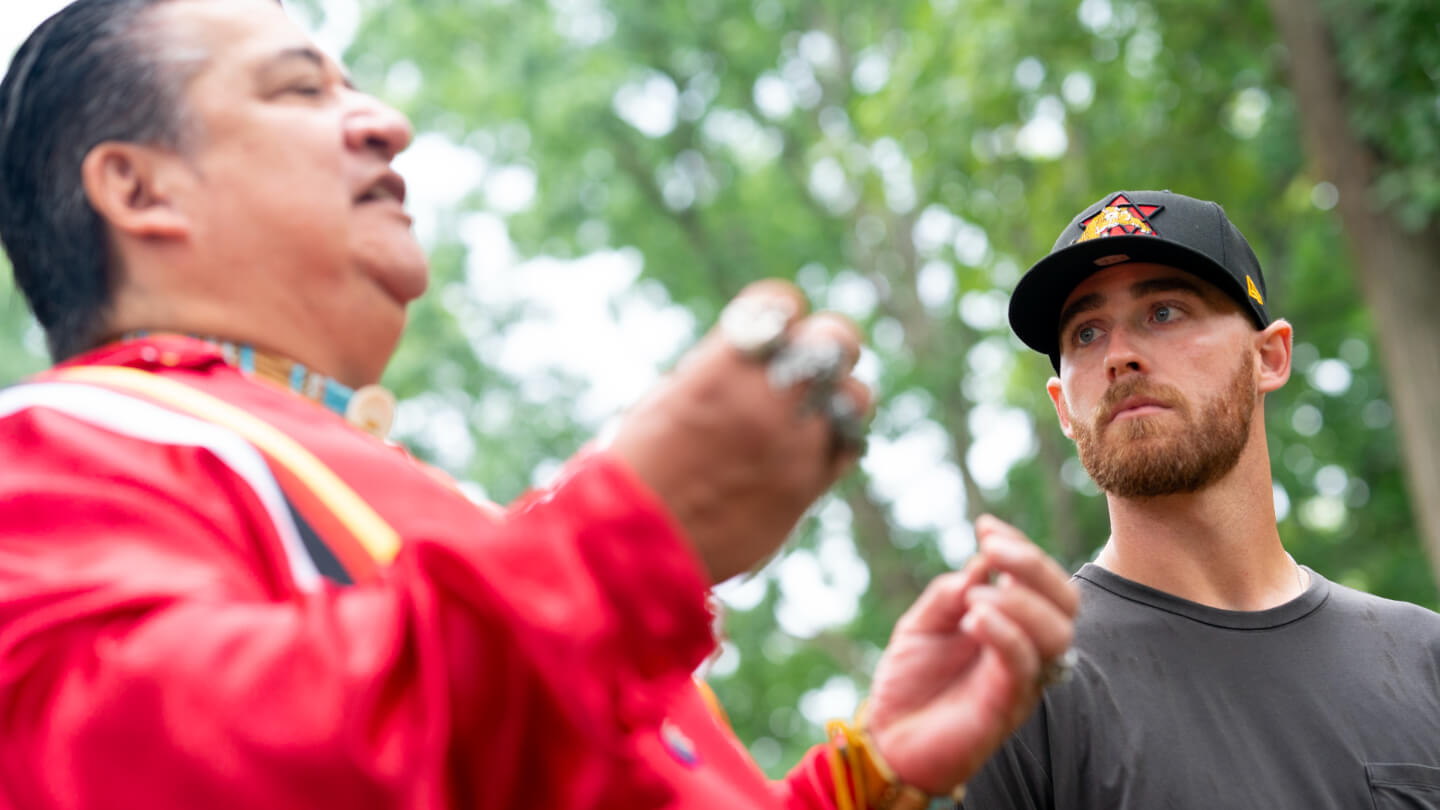
W
hat does one do after throwing five touchdowns to win a professional football game? Celebrate your accomplishment? Get some literal rest on your laurels?
If your Dane Evans, you get up early, jump in your truck and hit the road in a quest to learn and to grow.
Evans is of the Wichita and affiliated tribes, on his father Damon’s side. His great-grandmother, Doris Jean Lamar-McLemore, was the last fluent speaker of the Wichita language. She died eight years ago, at the age of 89, but the spirit of the tribe burns brightly and Evans remains a source of pride. Whenever he went away to college, his tribe in Anadarko, Okla. presented him with a feather, and at his grandmother’s powwow, he was given the crest he now wears around his neck.
Earlier this month, leading up to today’s National Day of Truth and Reconciliation, I accompanied the Hamilton Tiger-Cats quarterback as he visited with members of the Mississaugas of the Credit First Nation and Six Nations communities scattered along the banks of the Grand River in a quest to honour his own Native American heritage.
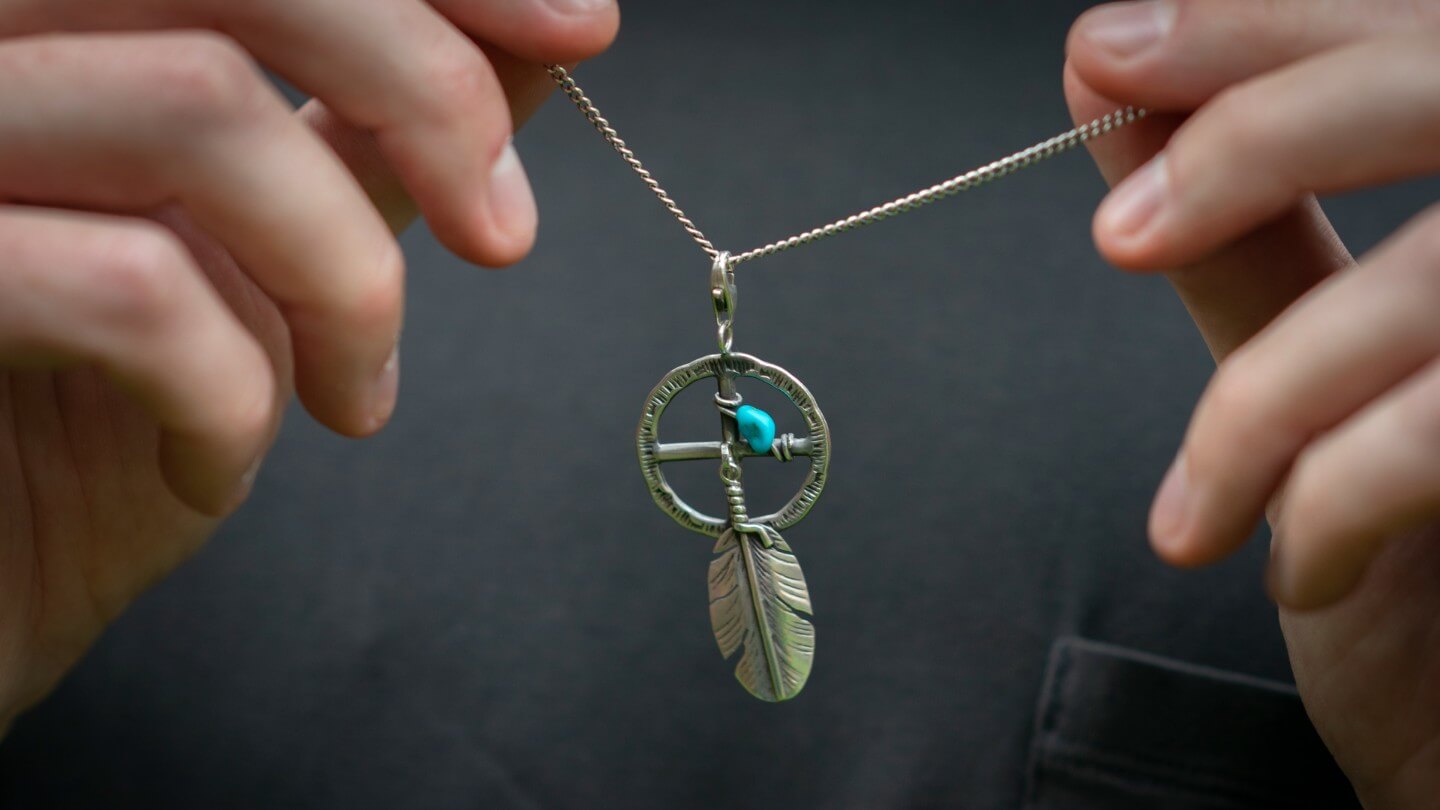
The tour wasn’t some one-off publicity stunt. Evans has been engaged in learning about and trying to help solve issues facing Indigenous communities for some time. He posts Instagram stories educating viewers about the original inhabitants of the land that he plays on in every CFL city, he wears his tribe’s crest on his cleats, he sells merchandise with proceeds going to Indigenous and Native American charities, he has partnered with his team and sponsors to bring Indigenous youth to games and mentor them, and has attended local powwows with his wife, Nikki.
The smiles on everyone’s faces — not just Evans’ but also those we encountered — is what will really stay with me. That kind of happiness isn’t something you often see in mainstream depictions of Indigenous people, but the visible pleasure people took in sharing their culture was a reminder of its importance, and of how vital the need to make sure it isn’t erased.
Here is a sampling of our conversations and the best moments from the day.
SPORTSNET: Why is your Native heritage important to you?
DANE EVANS: My great-grandma is the one who was — it’s not called a residential school in the States, it’s actually called an Indian school. She was taken from her land and taken there, and they tried to tell her not to speak her language, but she actually prevailed through all that, and she continued to speak her language and when she passed away in 2016, she was the last fluent speaker of our language. That’s something that I’m always honoured to just be a part of the family and a part of the tribe for that. It’s been something that’s always been important to me. Now I have this platform. I just want to get it out there.
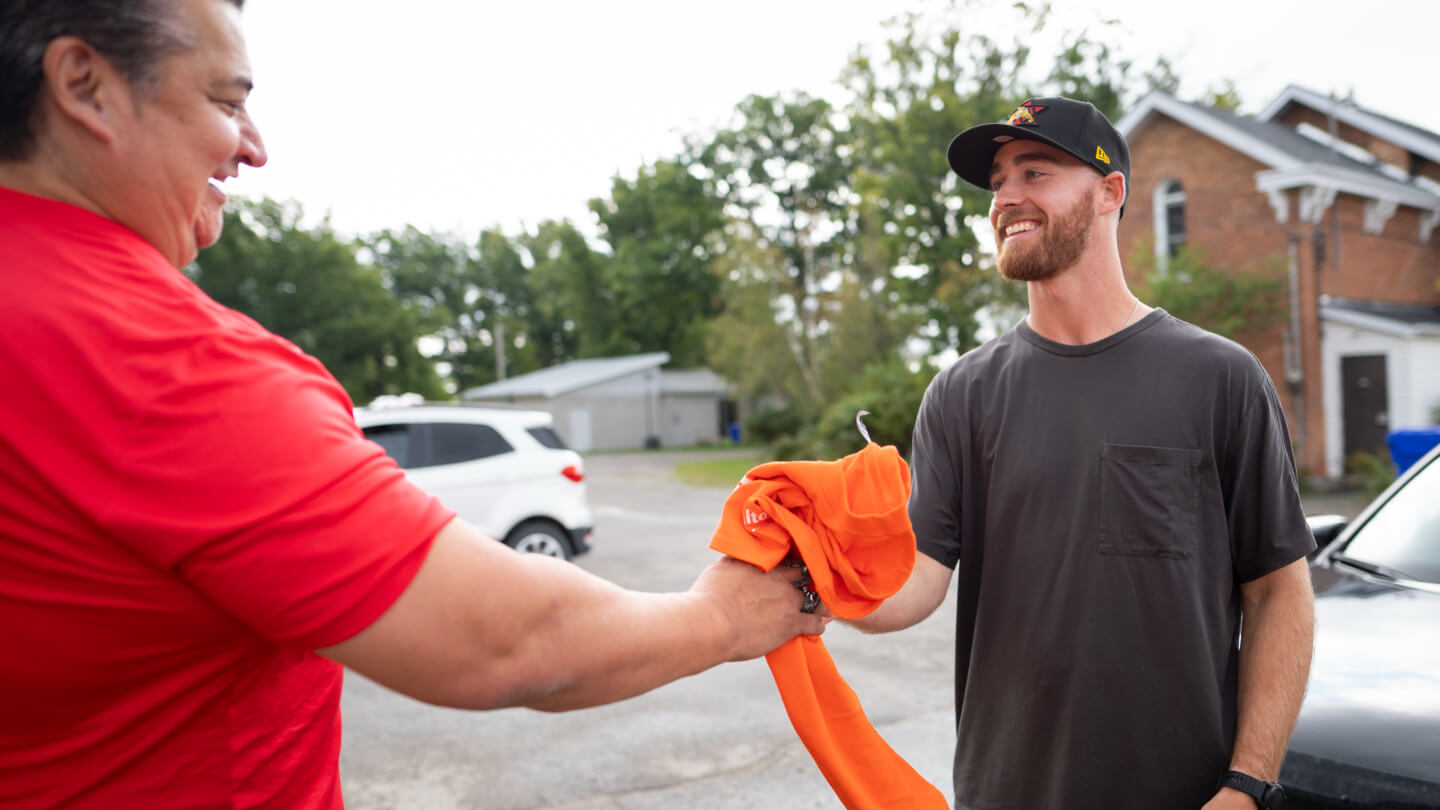
Evans first met with Chief (Gimaa) Stacey LaForme, the elected Chief of the Mississaugas of the New Credit First Nation, for a discussion of the history of residential schools in Canada and the treaty lands.
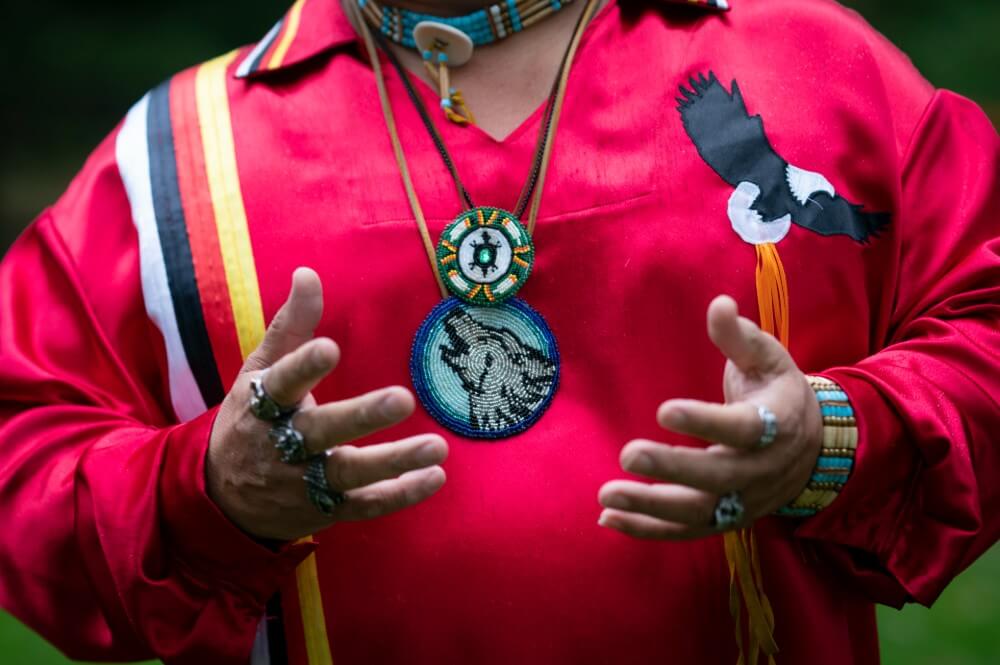
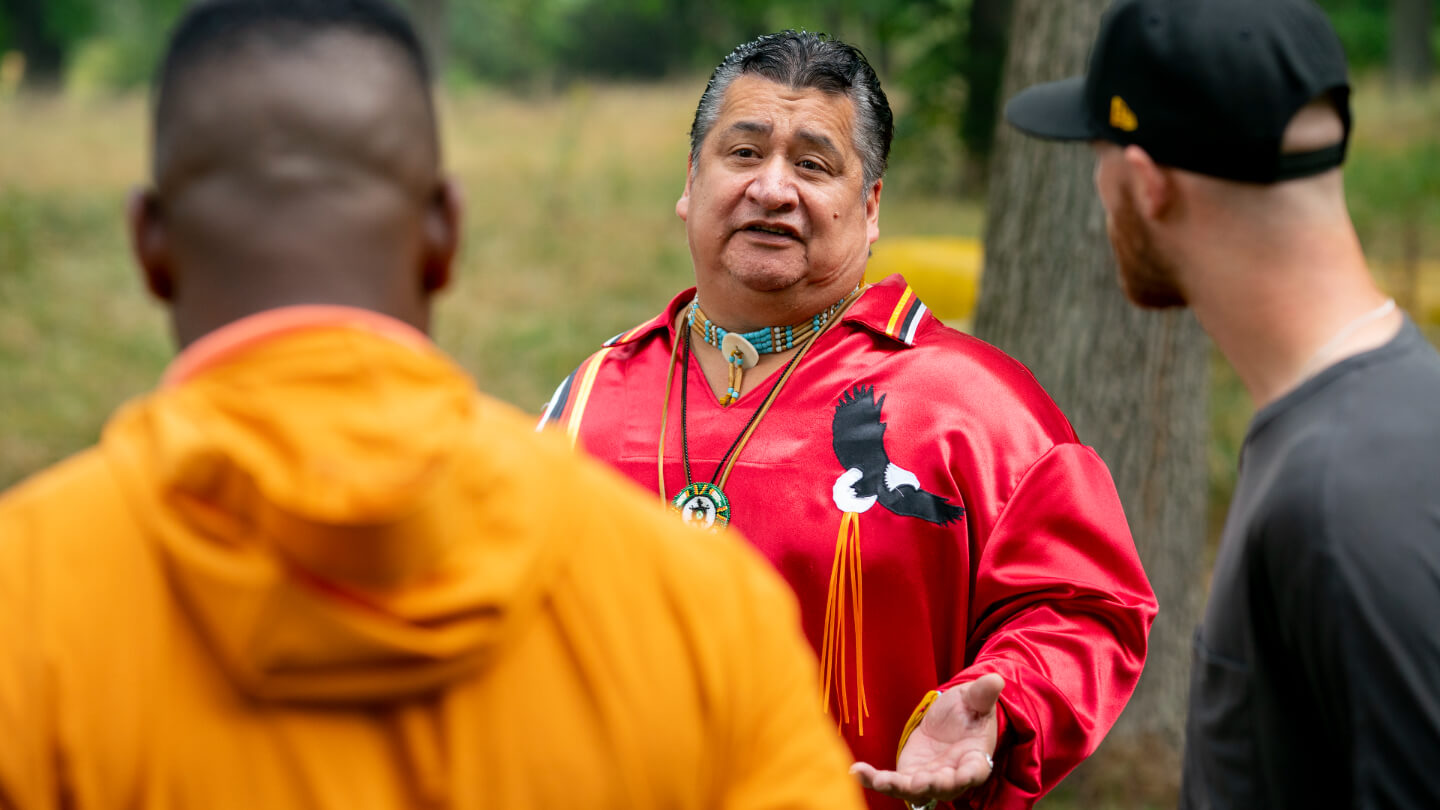
CHIEF STACEY LAFORME: The Missisaugas of the Credit are part of the Missisauga nation. We’re about 2,600 people; the Mississauga Nation is about 10,000. The Mississaugas have treaty lands of 3.9 million acres in Southern Ontario. Treaties taken with the Mississaugas where we understood, “You’re going to share it with us,” but the Canadian perspective and, before that, the Crown and English perspective was, “No, you’re giving it up. This is ours.”
SN: How important is it for you to continue to pass on the practices, culture and language so that it isn’t lost?
LAFORME: The history of the Mississaugas was to the point that not only did we lose most of our land, but we also lost our way. At one time when I was growing up, this was a world of alcohol abuse and violence. We lost most of our culture and practices, and so we begin to re-identify with who we were and come to understand who we are and make those connections. There is no one way. Everybody finds who they are through different methods. [Evans] did it through sports, right? Somebody else might do it through music or arts, and so there is no one way to find out who you are and where you belong. But language, culture really draw you together and reconnect you as a people.
SN: When we take time to reflect, to learn, what should we focus on?
LAFORME: “Reconciliation” is a word. Is it enough? I don’t know. We can use “reconciliation,” but the idea is we try to make things better. We try to put things back the way they were intended to be before we made all these foolish steps to try to think that everything should all be the same. What a boring world we’d live in if everything was the same.
We’re talking about, the uncovering of the children. That was a moment in time that I think slapped a lot of Canadians in the face and [they]said, “Whoa, I didn’t know this was going on.” There was no more time to deny or say, “this didn’t happen” or “that didn’t involve me.” These are our kids, all of ours. And that was a moment. I think that was a reality check for this country.

Nikki Shawana, an artist and language teacher from the Odawa Nation, Eagle clan, taught Evans about Indigenous languages and performed honours songs.
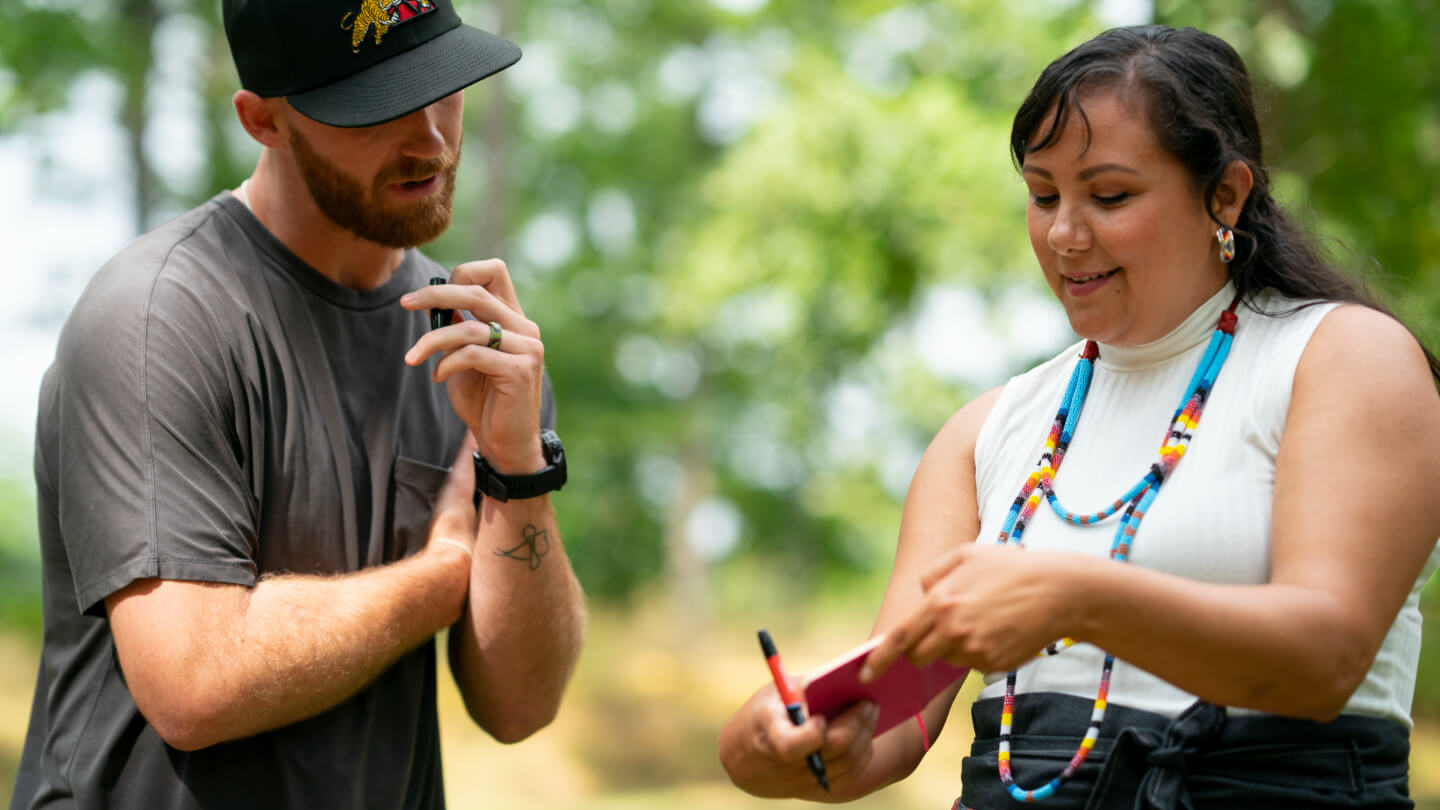
SN: How important is it to continue to teach Indigenous languages?
NIKKI SHAWANA: In our language is our whole worldview. So, it enriches us because it gives us, first of all, a sense of pride in who we are. It reminds us of our connection to the natural world and nature. So, if you are a speaker of our language, you don’t have to be taught to respect the environment or to respect the animals because those teachings are all within our language.
Even though I’m not a fluent speaker, I can pass on what I know. As long as I can teach the students the basics and get them excited about learning and get them inspired and motivated to continue their language journey, then I feel like I’ve done my part to help revitalize our language.
I’d like to teach you how to say “every child matters” in our language.
EVANS: I would be honoured.
SHAWANA: So, it’s Kina binoojiinyag chi-piitendaagziwag. Kina means “all.” Binoojiinyag is “children.” So, binooji is a child and to make it plural you add –nyag. Chi-piitendaagziwag, “they are all important.”
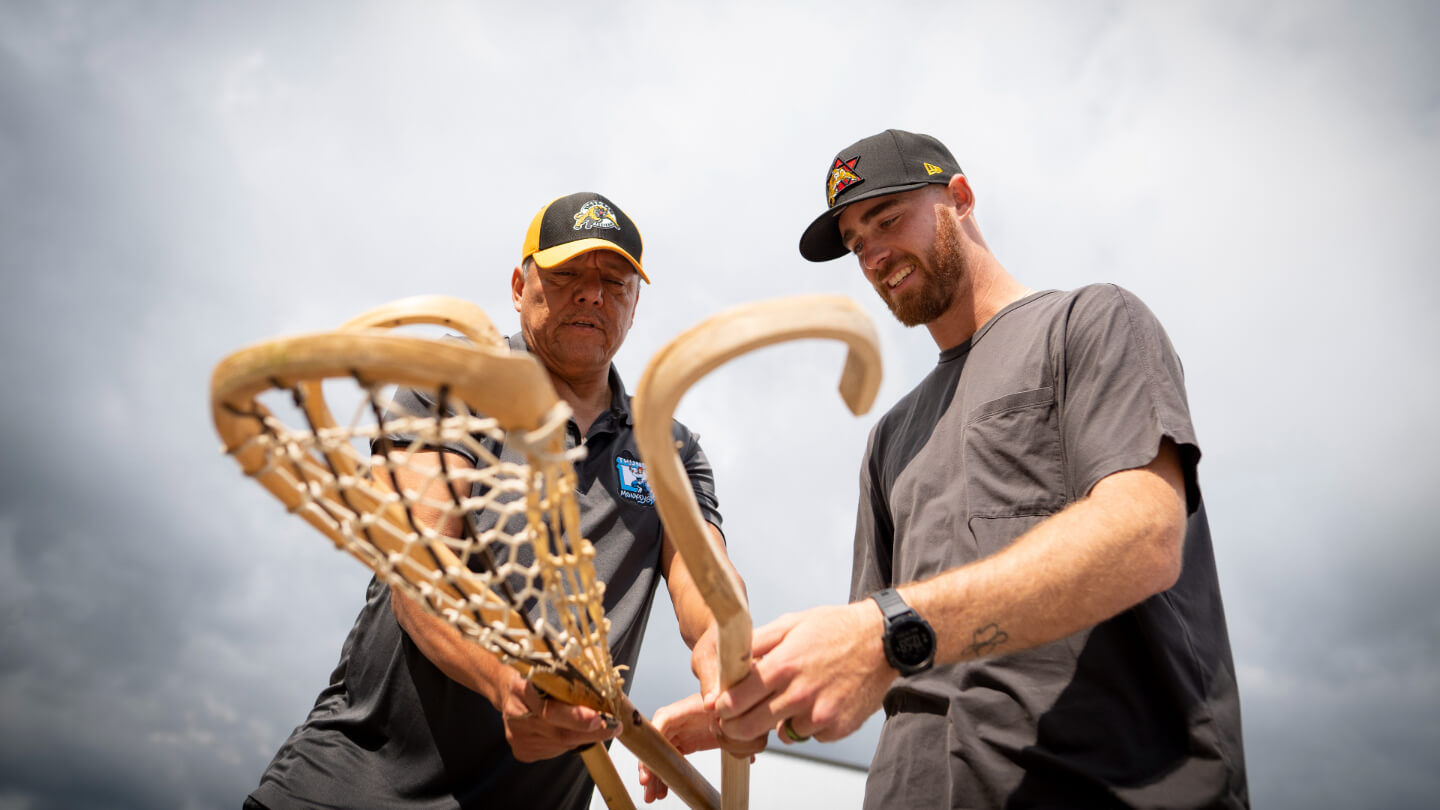
Kevin Sandy of Cayuga Nation, Wolf Clan, Six Nations of the Grand River and Director and CEO of the Iroquois Lacrosse Program, taught Evans the history of lacrosse.

SPORTSNET: What is the history of lacrosse in your culture?
KEVIN SANDY: Well my culture’s Haudenosaunee. If I kind of change Haudenosaunee to English that would mean, “people of the long house” or “the ones who build the long houses,” because that’s where our people lived. In our way of life and our teachings, we had games that we played. This stick ball game that you see here that a lot of Canadians and Americans know as lacrosse, for us, it’s connected to who we are. It’s connected to everything that is purely spiritual about who we are as Haudenosaunee people.
When we’re playing at the long house, we’re also playing to honour those thunder beings. When I hear thunder, I love that sound, because I know it’s going to nourish Mother Earth. Right now, we’re at harvest time, but springtime is when we play our game. We play to honour those seven thunder beings.
EVANS: I know my tribe had a version of it, too. My grandma would tell me, she would always just call it the stickball game.
SANDY: Oh yeah, that’s it, exactly, and that’s all it was.
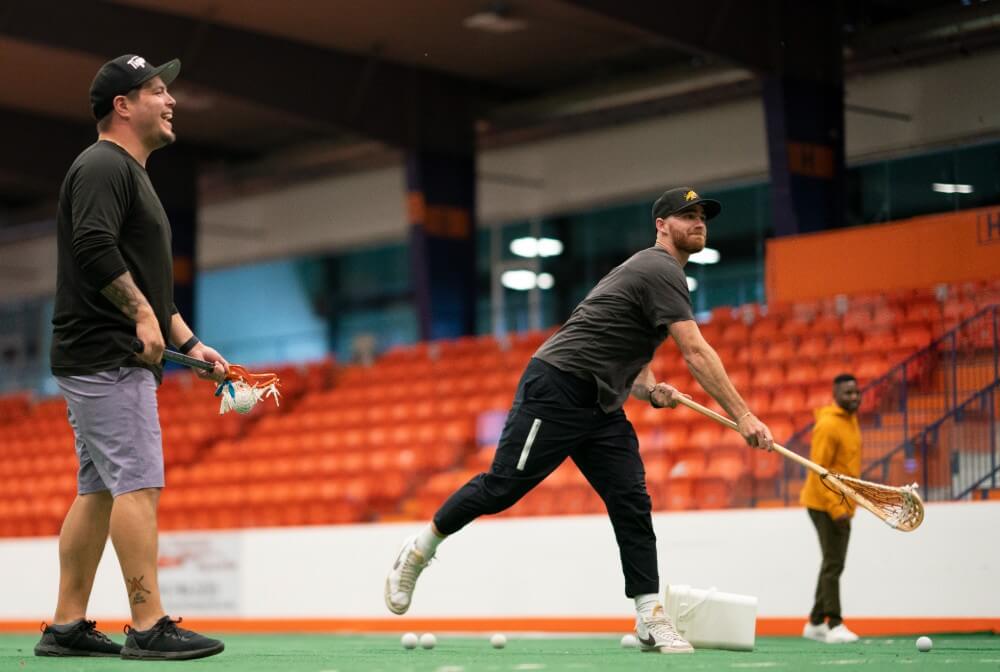
Cody Jamieson, a professional lacrosse player from the Turtle Clan at Grand River and first-overall pick in the 2010 National Lacrosse League Draft, taught Evans the keys to playing box lacrosse and the importance of it for his fellow Haudenosaunee people.
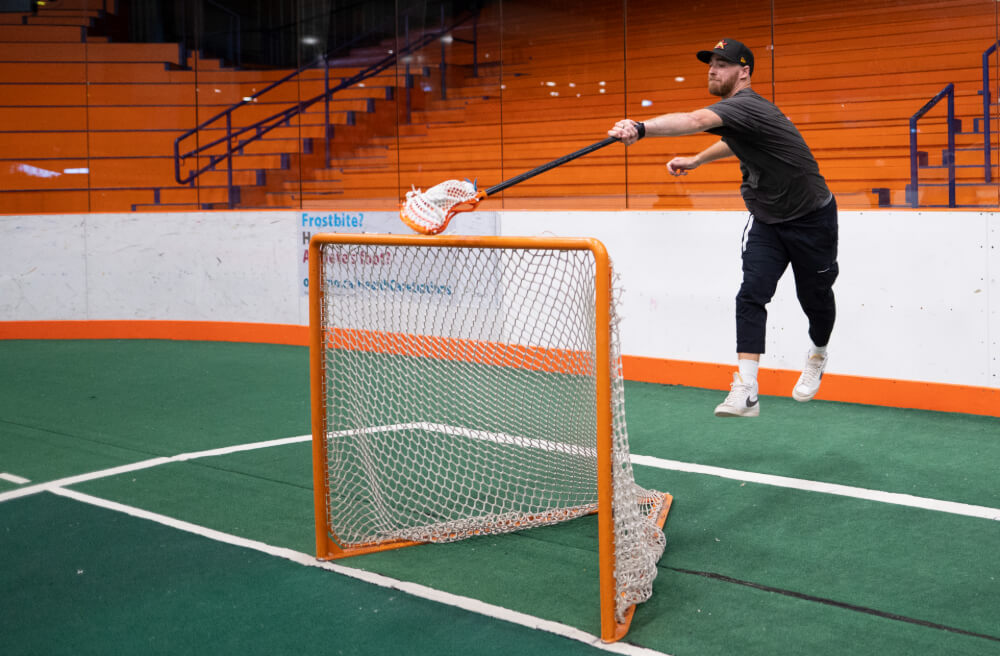
SN: How important is Lacrosse modern day to Mohawk people?
JAMIESON: For all of our Haudenosaunee people, our Six Nations, its medicine, and it’s not in the sense of taking a pill because I’m sick. It’s a lot of other things. You know, we struggle with mental health, and I find being in a team function definitely helps that.
SN: I was struck reading the 94 Calls to Action by the Truth and Reconciliation Commission that five of them were directed to sport. How have you seen sports, specifically lacrosse, help change some of the systemic barriers for Indigenous people in this country?
JAMIESON: For me, personally, it’s helped tremendously. I don’t think I would’ve been able to say that I would have a post-secondary education if it wasn’t for Lacrosse.
EVANS: Everything Cody’s saying about Lacrosse is like literally me with football. I went to the University of Tulsa, and I wouldn’t even been able to get into that school if it wasn’t for football. Much like Cody owes a lot to Lacrosse, I owe a ton to football. It’s just awesome to be passionate about sport like that, especially being Native kids.
JAMIESON: When there’s community support and family support, that’s what really makes a difference. And so, we always try to make sure that people feel supported.

SN: When we talk about truth and reconciliation in this country, we talk about listening and learning. I’m an active learner. What was the biggest takeaway for you today?
EVANS: I’m the exact same way. I’m very hands-on, very active. It’s one thing to read about it online or in a book, but when you get out here and you talk to the people that live out here and that are from here, it hits different. For me, I’m a sports guy, so it was amazing to see how sport is correlated to everyday life and how a game such as lacrosse can tie everything together bigger than sport. We might all be from different walks of life, right, but we’re all pulling towards the same thing.
Everybody knows what happened was bad and it’s not about just pushing it away anymore. It’s about learning about it and moving forward from it.
Peter Power/Sportsnet (12)




